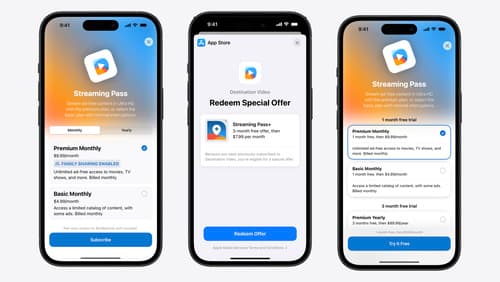how are content configurations composable?
Asked on 2024-08-02
1 search
Content configurations in SwiftUI are highly composable, allowing developers to combine different kinds of content seamlessly. This is achieved through several key techniques and patterns:
-
ViewBuilder Attribute: By using the
ViewBuilderattribute, developers can initialize containers with a variety of views. This allows for flexible composition within a single container. For example, a list can be composed of both static and dynamic content, as shown in the Demystify SwiftUI containers session. -
Foreach View: The
Foreachview can be nested within aViewBuilder, enabling the combination of static and dynamic content. This is particularly useful for creating unified lists that display both hardcoded and data-driven rows (Demystify SwiftUI containers). -
View Modifiers: Composition is also a fundamental part of view modifiers in SwiftUI. View modifiers allow developers to apply a series of modifications to a base view, creating a clear and customizable result. This pattern is used extensively to build complex UIs in a readable and maintainable way (SwiftUI essentials).
-
Custom Containers: Developers can create custom containers that support sections and headers by leveraging new APIs like
Foreach section of. This allows for more complex layouts and better organization of content within custom views (Demystify SwiftUI containers).
These techniques make SwiftUI a powerful tool for building flexible and composable user interfaces. For more detailed information, you can refer to the sessions mentioned:

Say hello to the next generation of CarPlay design system
Explore the design system at the heart of the next generation of CarPlay that allows each automaker to express your vehicle’s character and brand. Learn how gauges, layouts, dynamic content, and more are deeply customizable and adaptable, allowing you to express your own design philosophy and create an iconic, tailored look. This session is intended for automakers, system developers, and anyone designing a system that supports the next generation of CarPlay.

What’s new in StoreKit and In-App Purchase
Learn how to build and deliver even better purchase experiences using the App Store In-App Purchase system. We’ll demo new StoreKit views control styles and new APIs to improve your subscription customization, discuss new fields for transaction-level information, and explore new testability in Xcode. We’ll also review an important StoreKit deprecation.

SwiftUI essentials
Join us on a tour of SwiftUI, Apple’s declarative user interface framework. Learn essential concepts for building apps in SwiftUI, like views, state variables, and layout. Discover the breadth of APIs for building fully featured experiences and crafting unique custom components. Whether you’re brand new to SwiftUI or an experienced developer, you’ll learn how to take advantage of what SwiftUI has to offer when building great apps.
